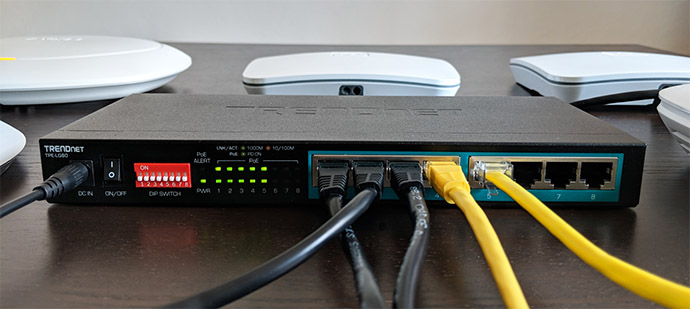
Industrial Ethernet Switches
Industrial Ethernet switches are an important part of any business’s network. They facilitate high-speed communication between multiple different devices, allowing for larger and more complex networks to be developed. If you’re in the market for an industrial Ethernet switch, it can be difficult to know which type is best suited for your needs. In this article, we’ll provide an overview of the different types of industrial Ethernet switches available today and offer some advice on how to choose the right one for your needs. Read on to find out more!
What is an industrial Ethernet switch?
An industrial Ethernet switch is a specialized type of network switch that is designed to be used in harsh, industrial environments. They are typically ruggedized to withstand vibration, extreme temperatures, and other conditions that would damage or destroy a standard network switch. Industrial Ethernet switches also usually have enhanced security features to protect against tampering and hacking.
The different types of industrial Ethernet switches
Industrial Ethernet switches come in a variety of shapes and sizes, each designed for specific applications and environments. Here is a quick rundown of the different types of industrial Ethernet switches available on the market today:
– unmanaged industrial Ethernet switches: These switches are typically used in small networks where there is no need for advanced configuration or management features. Unmanaged industrial Ethernet switches are simple to install and use, making them a good choice for smaller businesses or those just getting started with industrial Ethernet.
– managed industrial Ethernet switches: These switches offer more advanced features than unmanaged models, including the ability to configure and manage network traffic. Managed industrial Ethernet switches are a good choice for larger businesses or those with more complex networking needs.
– modular industrial Ethernet switches: Modular industrial Ethernet switches offer the flexibility to add or remove modules as needed, making them ideal for growing businesses or those with changing networking requirements.
The benefits of using an industrial Ethernet switch
An industrial Ethernet switch is a device that connects Ethernet-enabled devices in an industrial environment. They are designed to withstand the harsh conditions found in factories and other industrial settings.
Industrial Ethernet switches offer a number of benefits over traditional switches. They are more rugged and can withstand higher temperatures, vibrations, and shocks. They also offer better security features and can be used with a wider range of protocols.
When choosing an industrial Ethernet switch, it is important to consider the specific needs of your application. Switches come in a variety of port sizes and speeds, so it is important to select one that will meet the demands of your network.
How to choose the right industrial Ethernet switch for your needs
Industrial Ethernet switches are designed to withstand the harshest environments and provide reliable connectivity for mission critical applications. When choosing an industrial Ethernet switch, it is important to consider the specific needs of your application and choose a switch that is designed to meet those needs.
There are a few key factors to consider when choosing an industrial Ethernet switch:
- Environment: Industrial Ethernet switches are designed to operate in harsh environments with wide temperature ranges, high vibration, and dusty or wet conditions. Consider the environment in which the switch will be installed and choose a switch that is rated for that environment.
- Connectivity: Industrial Ethernet switches offer a variety of port types and speeds. Choose a switch with the right mix of ports and speeds for your application.
- Manageability: Many industrial Ethernet switches offer advanced management features such as SNMP support, remote management, and diagnostics. Consider your manageability requirements when choosing a switch.
- Redundancy: Some industrial Ethernet switches offer redundant power supplies and/or redundant links to ensure that theswitch remains operational even if one power supply or link fails. If redundancy is important for your application, choose a switch that offers redundant features.
Conclusion
Industrial Ethernet switches are an important component of any industrial automation system. With the right switch, your network can run smoothly and efficiently without being vulnerable to external threats. When choosing an industrial Ethernet switch, it is important to carefully consider factors such as size, speed, scalability and cost in order to select a device that meets all your requirements. By taking these steps into account you will be able to ensure that you make the best choice for your needs and get the most out of your investment.


